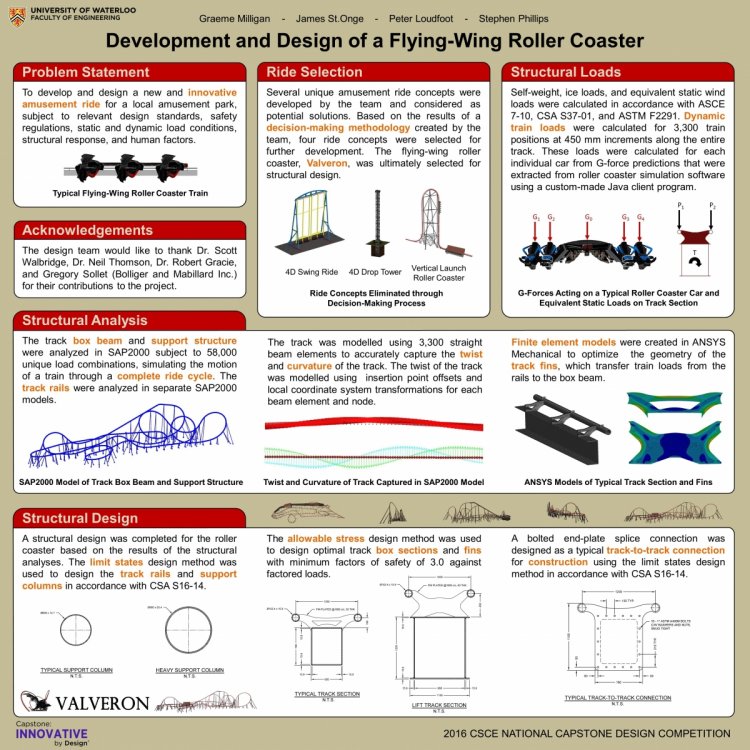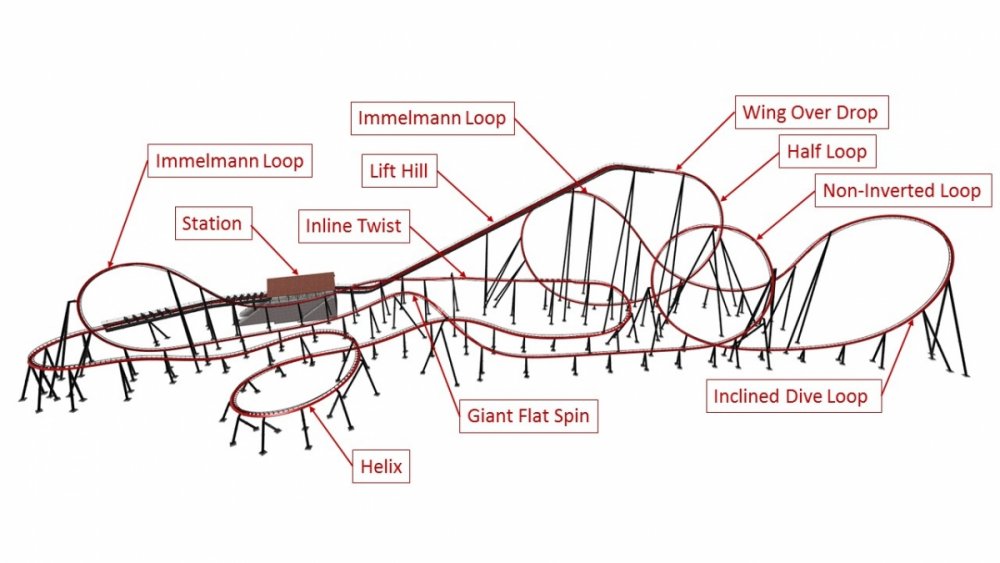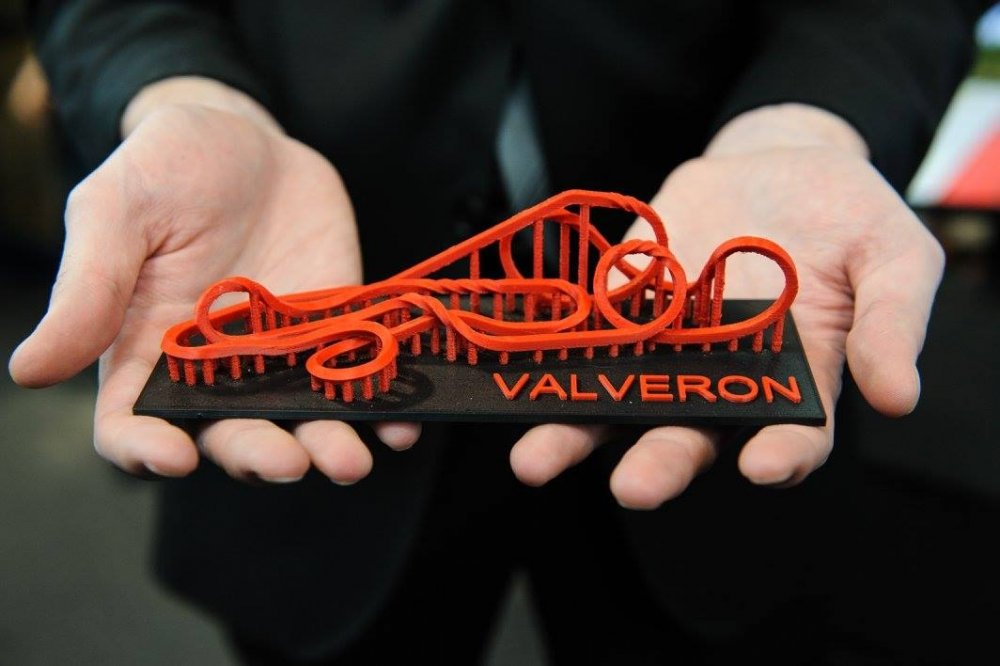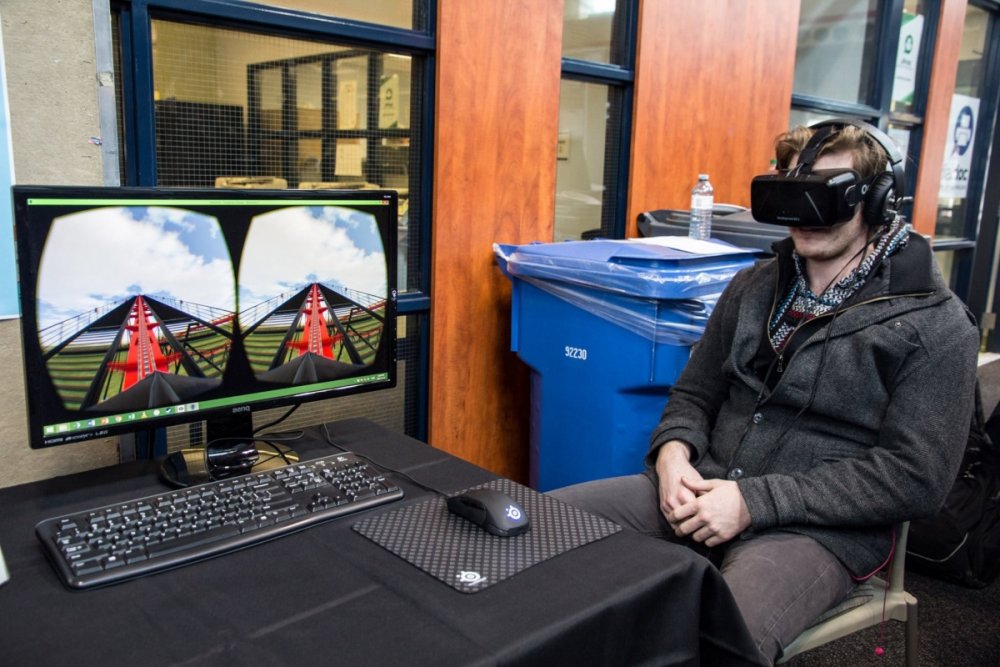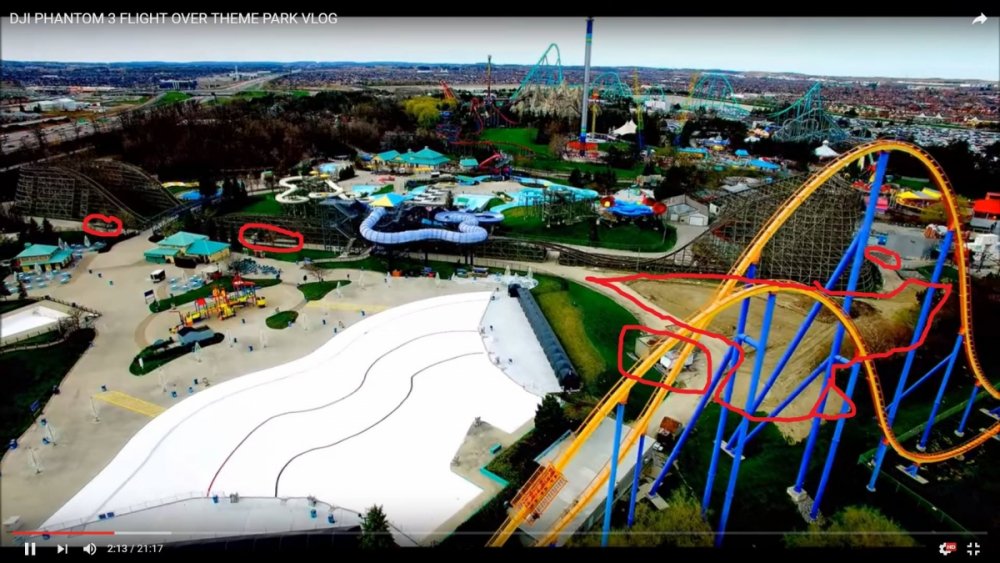
jtstonge
Members-
Posts
20 -
Joined
-
Last visited
Everything posted by jtstonge
-
Canada's Wonderland Discussion Thread
jtstonge replied to BDG's topic in Theme Parks, Roller Coasters, & Donkeys!
I don't think any reasonable person would click on a video titled "Canada's Wonderland World Record Coaster Leak" with the caption "Blueprints found," and not expect spoilers of any kind. The correspondence between CedarFair1 and Canada's Wonderland is the business of CedarFair1 and Canada's Wonderland. If they have come to an agreement on what can and cannot be shared online then that's their business, not ours. I can guarantee that if there was information provided in the YouTube videos that the park did not want there, then the park would do something about it. Asking for written proof from this guy in exchange for "not bothering him" is just immature bullying... What's next, are you going to ask him for his birth certificate too? -
Canada's Wonderland Discussion Thread
jtstonge replied to BDG's topic in Theme Parks, Roller Coasters, & Donkeys!
-
Canada's Wonderland Discussion Thread
jtstonge replied to BDG's topic in Theme Parks, Roller Coasters, & Donkeys!
What is your definition of a CAD drawing then? It was drawn in AutoCAD, but just filled in with solid hatches. -
Canada's Wonderland Discussion Thread
jtstonge replied to BDG's topic in Theme Parks, Roller Coasters, & Donkeys!
To get the best estimate possible, you need to know the radius of the curved track inside the tunnel. I gave it my best guess based on the pictures you posted, but it's pretty difficult to get an accurate number without a picture of the track taken directly from the side. The dimensions of the tunnel aren't really that important, it's the track that matters. -
Canada's Wonderland Discussion Thread
jtstonge replied to BDG's topic in Theme Parks, Roller Coasters, & Donkeys!
Oh shoot, I forgot to include the Ziz Coefficient!! If I update my calcs, Ziz will be 400 feet tall and will pull 9 G's!! -
Canada's Wonderland Discussion Thread
jtstonge replied to BDG's topic in Theme Parks, Roller Coasters, & Donkeys!
I was feeling motivated today and decided to crunch some numbers to estimate the height of the new roller coaster. If the portion of track installed inside the tunnel is the bottom of the first drop, then we can use the conservation of energy principle to calculate the height of the drop as follows: At the top of the drop, the train has gravitational potential energy, Eg: Eg = m*g*h where m is the mass of the train, g is gravitational acceleration (9.81 m/s^2), and h is the height of the drop. At the bottom of the drop, the gravitational energy is converted to kinetic energy, Ek: Ek = 0.5*m*v^2 where v is the speed of the train. (Some energy would be lost due to friction and air resistance, but the amount would be relatively small) Equating Eg and Ek: m*g*h = 0.5*m*v^2 Rearranging: h = (0.5*v^2)/g (m cancels out, and so these calculations are not dependent on the mass of the train) In order to solve for h, we need to estimate the speed of the train at the bottom of the drop. We can do this using the concept of centripetal force and the provisions of ASTM F2291 (Standard Practice for Design of Amusement Rides and Devices). The ASTM standard specifies that the maximum +Gz acceleration that patrons may be exposed to for a duration between 2 and 4 seconds is 4g (4 times the acceleration due to gravity). 4g also seems to be the typical maximum G-force for B&M roller coasters. If we assume that the train experiences 4g at the bottom of the drop, then we can say that the centripetal acceleration and gravitational acceleration sum to 4g: (v^2)/r + g = 4g Rearranging: v^2 = 3*g*r where r is the minimum radius of curvature of the track at the bottom of the drop. Plugging this back into the energy equation: h = 0.5*3*g*r/g Simplifying: h = 1.5*r Now the only thing we need to estimate h is the radius of the track at the bottom of the drop. Based on the photos that have been posted of the tunnel, the portion of visible track appears to enter the tunnel at about 30 degrees. The concrete pad on the other side of the tunnel also appears to have a slope of about 30 degrees. According to Google Maps, the diameter of Vortex's helix is about 25 meters, and based on that I've estimated the length of the curved track to be about 30 meters. If we assume that the track has a constant radius of curvature over this length, then the radius can be calculated from geometry as: r = (0.5*30)/sin(30) r = 30 meters Plugging this into the equation for h: h = 1.5*r h = 45 meters Adding +/- 10% to account for possible errors in my estimates: h = 40 to 50 meters Therefore if my estimates are correct, I would guess that the height of the new roller coaster will be somewhere between 40 and 50 meters (130 to 165 feet). For reference, the height of Valravn at Cedar Point is 68 meters and the height of Gatekeeper is 52 meters. The average height of all B&M dive coasters built to date is 50 meters. -
Canada's Wonderland Discussion Thread
jtstonge replied to BDG's topic in Theme Parks, Roller Coasters, & Donkeys!
Well said. It's extremely important to differentiate between something that is a fact and a guess. -
Canada's Wonderland Discussion Thread
jtstonge replied to BDG's topic in Theme Parks, Roller Coasters, & Donkeys!
CedarFair1, that photo you posted of hotel construction looks like a typical borehole drill that is used to take soil samples well before a design has even begun. The mechanical properties of the soil are needed to design foundations for whatever structure is going to be built. It is way too early to speculate whether something will be built on that plot of land in the near future at all, let alone a hotel. Your enthusiasm over all the construction progress is great, but I think you should be a little careful about stating things as facts when there is not enough information available. -
Canada's Wonderland Discussion Thread
jtstonge replied to BDG's topic in Theme Parks, Roller Coasters, & Donkeys!
That photo is a flattened 360 degree photo sphere. I've converted it back to a 3D photo sphere and I've made a video which makes it much easier to see the ride location and the construction progress. [youtu_be]https://youtu.be/tFRm9fzSpgg[/youtu_be] -
Cedar Point (CP) Discussion Thread
jtstonge replied to robbalvey's topic in Theme Parks, Roller Coasters, & Donkeys!
I found this really cool documentary by Discovery about daily operations at Cedar Point. It's definitely worth watching!! [youtu_be]https://youtu.be/45DcqQVpvms[/youtu_be] -
Canada's Wonderland Discussion Thread
jtstonge replied to BDG's topic in Theme Parks, Roller Coasters, & Donkeys!
One of my partners and myself took part in the Ryerson Invitational Thrill Design Competition that was hosted by Ryerson University in 2014. There were a number of components to the competition, including a roller coaster design challenge that was won by our team at the University of Waterloo. The overall competition was won by Drexel University in the United States. I'm not sure if this is the same competition that you are referring to, but there was an article written about it on Coaster101. -
Canada's Wonderland Discussion Thread
jtstonge replied to BDG's topic in Theme Parks, Roller Coasters, & Donkeys!
I personally put about 450 hours into the project, but our team of 4 students put in around 1,600 hours total over 12 months. It was quite an accomplishment on top of all our regular course work. We actually had the coaster named Ziz for most of the project as a bit of an inside joke but we decided to change it to something a little more aggressive and cool for public presentations. We picked the name "Valveron" before Valravn was announced for Cedar Point and unfortunately they ended up sounding very similar. -
Canada's Wonderland Discussion Thread
jtstonge replied to BDG's topic in Theme Parks, Roller Coasters, & Donkeys!
I haven't discussed fabrication with B&M and I'm honestly not very familiar with the processes that are used to manufacture the track. All I can tell you is that B&M's are manufactured by Clermont Steel Fabricators in Ohio and they have 1 Cincinnati brake and 1 Wysong CNC brake. -
Canada's Wonderland Discussion Thread
jtstonge replied to BDG's topic in Theme Parks, Roller Coasters, & Donkeys!
In our final year of studies, we're required to complete a year-long design project like this that addresses a real-world engineering problem. It's not a component of a regular course, but the project carries a weight equivalent to 2 regular engineering courses. We have to submit numerous reports and give presentations throughout the duration of the project. -
Canada's Wonderland Discussion Thread
jtstonge replied to BDG's topic in Theme Parks, Roller Coasters, & Donkeys!
For anyone interested in the structural design of roller coasters, I thought I would share my 12-month capstone design project that I recently completed with 3 of my classmates at the University of Waterloo. Our project involved the design of a new flying-wing roller coaster (a combination of a flying roller coaster and a wing roller coaster) to replace SkyRider at Canada’s Wonderland. We initially developed 16 new amusement ride concepts, but we ultimately found the flying-wing roller coaster to be the optimal ride for implementation through an extensive decision-making methodology. We then completed a detailed structural analysis and design of the roller coaster which is briefly summarized on our poster (attached below). We actually created a 100-page technical report to explain our entire project in detail, but I think that the poster provides a good general overview of our work. I love sharing our project with people as I am very passionate about roller coaster design and I’d be happy to discuss it further and answer any questions. Our team actually just returned from the CSCE (Canadian Society for Civil Engineering) National Conference where we had the opportunity to present our project nationally and we were honoured to receive 3rd place in the capstone competition against universities from across Canada. (Although we were in contact with Canada’s Wonderland and Bolliger & Mabillard throughout our project, I want to emphasize that the project is completely fictitious and is not related to any real project at CW or B&M) Thanks for Reading!! Flying-Wing Roller Coaster Poster Flying-Wing Roller Coaster Layout Flying-Wing Roller Coaster Display at the University of Waterloo Capstone Symposium 3D-Printed Model of the Flying-Wing Roller Coaster Oculus Rift Demonstration of the Flying-Wing Roller Coaster -
Canada's Wonderland Discussion Thread
jtstonge replied to BDG's topic in Theme Parks, Roller Coasters, & Donkeys!
Two construction trailers, two flatbed trucks, and more land clearing have been spotted around Minebuster and Splash Works from Cedar Fair Coaster Watch on Facebook -
Canada's Wonderland Discussion Thread
jtstonge replied to BDG's topic in Theme Parks, Roller Coasters, & Donkeys!
-
Canada's Wonderland Discussion Thread
jtstonge replied to BDG's topic in Theme Parks, Roller Coasters, & Donkeys!
That awkward moment when you climb to the top of WindSeeker for maintenance and realize you forgot your wrench -
Canada's Wonderland Discussion Thread
jtstonge replied to BDG's topic in Theme Parks, Roller Coasters, & Donkeys!
Hi Everyone, I recently had the opportunity to take a walk around Canada's Wonderland with Peter Switzer (Director of Maintenance and Construction at Canada's Wonderland) and thought I would share some information regarding project contracts and new ride construction at the park. Peter informed me that when CW is looking to build a new attraction, the process is identical to that of any other engineering project. First of all, the decision to build a new ride (and what type of ride will be built) is strictly that of Canada's Wonderland and not Cedar Fair. Each individual park makes its own decisions on what rides are built and when, however they must also receive approval from Cedar Fair. Below is a simplified outline of the process. When the park decides that they want to build a new ride, they put out something similar to a "request for proposal (RFP)" where they state the scope of the project including the type of ride that they want to construct and the features they want it to have. They might also include other details such as budgetary constraints, site constraints, and/or required building and design codes. The RFP is made available to amusement ride consulting companies which, if desired, submit proposals for a ride that meets the park's requirements. The park then has the option to accept one of the proposals or decline all of them. If the park accepts a proposal, they award an engineering contract to the corresponding company which is then responsible for developing a detailed design and manufacturing the ride. The ride's designers communicate with representatives from the park to tweak and revise the design until both parties agree on a final design. This process can take months and can involve hundreds of revisions as I'm told was the case for Leviathan. I asked Peter if he could provide specific examples of changes that were made to Leviathan from its original design however he was unable to recall any since the process occurred 5 years ago (more than a year before construction started on Leviathan) and he was recently dealing with another large project (very interesting). Another interesting note to add here is that many amusement ride consulting firms do not actually design the entire ride themselves. When Wonderland was working with B&M to build Leviathan, B&M was mainly responsible for designing the track and support structure. The design of the ride's specialized subsystems such as the electrical system and the concrete foundation piers were sub-contracted to other engineering companies that each specialize in a specific area. For example, all of the concrete foundation piers for Leviathan were designed by a geotechnical consulting firm within Ontario since this company is most familiar with the soil conditions around CW. Sub-contracting of work can also help to ensure that the rides are designed to fully comply with local building and design codes, especially when the primary consultant is located in another country. When Behemoth was constructed, the fall-arrest system that was installed on the lift hill for maintenance workers did not comply with local codes. Because of this, the park had to retrofit the ride with its own system to satisfy the codes. If a major problem develops after a ride is constructed at the park, CW may contact the designer to help mitigate the problem. After Leviathan was constructed, the park received numerous noise complaints from the surrounding residential areas due the coaster's roar as it plummeted down the first drop. Canada's Wonderland contacted B&M to help resolve the problem and B&M experimented with various alternatives at their facility. The optimal solution that B&M came up with was to fill the entire lift hill (which is made up of hollow rectangular steel segments) with sand to reduce vibrations which cause excessive noise. The park proceeded with this solution by cutting holes in each of the lift hill segments and filling them all with granular. This significantly reduced the loudness of the ride and the number of noise complaints (although I personally miss that loud signature B&M roar). I apologize for the long post but I hope that some of you will find this information as interesting as I do. I hope to share more information that I learned from Peter Switzer at some point, I had the opportunity to ask him a lot of questions about the park and specific rides. I even got a tour inside WMG with him and I was allowed to snap a few pictures with the house lights on (although I'm a little weary about posting them here). Cheers!!


